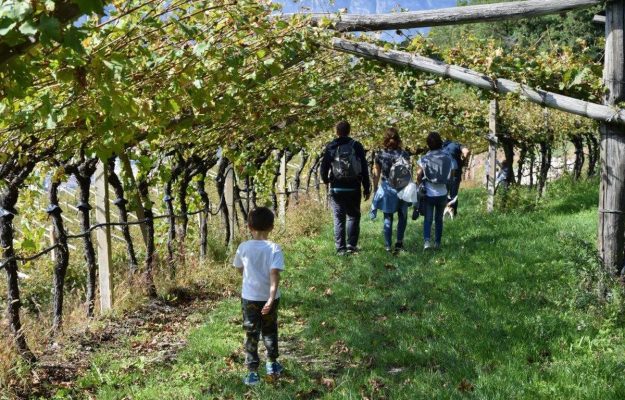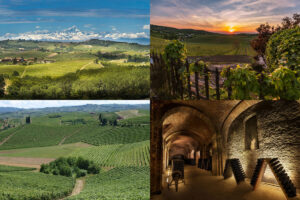Guided tours and tastings in the winery remain the most offered, but drop respectively by 24% and 22% compared to the pre-pandemic period, due to the decrease in the number of employees dedicated to tourism services - from 3.4 to 2.8 - as a result of the economic crisis that has hit the companies and the difficulty of maintaining the offer unchanged. The pandemic, however, led to the growth of other outdoor experiences, first of all picnics (+9%) and tastings in the vineyards (+6%), as well as an increase in wine sales through the company shop (+4%). And if before the spring lockdown, 53% of the experiences were purchased by international tourists, Americans, in the lead, in the summer of restart and recovery the trend was reversed with 70% represented by Italians. Now, the new lockdown and travel restrictions, and the resulting drop in attendance, but also the comparison with what other countries in the world are doing (only a third of Italian wineries sell virtual tastings, talk online and virtual tours, as well as wines on their site, relying on specialized intermediaries, the opposite of what happens in California and France), require reflection to get out of a crisis in which as many as 31% of companies have declared decreases in the sale of tourist services over 70% over the same period of the previous year, and to cope with which 66% relied on online sales, 57% on home delivery, 31% on vouchers for future visits and 22% on virtual tastings. It emerges from the digital conference “Wine tourism the world at the time of Covid-19” by Roberta Garibaldi, president of the Italian Food and Wine Tourism Association, with the communication agency Doc-Com, on the prospects for wine tourism in the pandemic, and how the contingent situation, with strong restrictions on travel, should be an opportunity for wineries to plan a future in which tourists are changing and the trends just seen will be maintained, with choices more and more at the last minute and trips still to destinations close by and for short periods. The target will still be residents and small groups of local people, who will search for proposals and services ad hoc, with the need to implement e-commerce and digital proposals, making more professional and engaging even the online tastings. Millennials will have a greater propensity to travel, and they will accept a higher share of “Covid risk” to live an experience than Baby Boomers.
“The wine tourism sector has experienced a recovery in the summer months - Roberta Garibaldi stressed - confirming its centrality in the preferences of tourists, Italian and not”. The new lockdowns in Italy and Europe require an important and in-depth reflection: to face the crisis we are going through it will be essential “to respond and provide solutions, ensure economic support from institutions and stimulate the digitization of the sector”. “The centrality of a sector such as wine tourism is testified by the success, not taken for granted, that events such as “Calici di Stelle” and “Cantine Aperte in Vendemmia” have had in summer - said Nicola D’Auria, president of Movimento del Turismo del Vino, in the webinar with Donatella Cinelli Colombini, president of Donne del Vino, and Paolo Privitera, CEO Evensi - the emotional experience in the places of production remains our main objective, but, in light of this prolonged health emergency, we can not fail to point out a need to take that digital step forward, at the level of individual companies, but especially at the national level, also highlighted by comparison with other European countries. The crisis can be the right stimulus, both for us winemakers and institutions, to go in this direction and really help a sector that, thanks to its dual nature of agriculture and tourism, involves networks and collaborations with many organizations, activities and realities in the territory”.
The spring lockdown has brought about a change in the activities proposed by Italian wineries, as shown by the survey conducted by the Wine Tourism International Think Thank Committee of experts. Looking at Spain, it emerges that the tourist offer is wider and more varied than in Italy. Before the lockdown, 48% and 32% of Spanish wineries offered routes to be carried out independently in the winery in the vineyards compared to 11% and 12% of Italian wineries respectively; significant differences are also found for dinners in the vineyards (36% vs 19%), grape harvesting for tourists (29% vs 12%), wine clubs (26% vs 11%) and tours and proposals for children (26% vs 17%). After the end of the period of forced closure, this gap has not been filled and has remained strong especially for independent visits and wine clubs.
Going back to Italy, the presence of more and more Italians and fewer foreigners is confirmed by the Divinea portal. The trend of presences in the winery appears to be strongly correlated to the propensity to release reviews. From the analysis of the presences that after the summer growth appeared in strong decline already in the month of October, with The Data Appeal Company and its tool Data Appeal Studio, it is also evident the sentiment of the customers of the wineries in the period January-October 2020 that shows a much higher appreciation in these months compared to restaurants (92.1/100 vs 86.1/100). This suggests to continue to design proposals according to the contingent situation. Wherever possible according to the restrictions, also by organizing on-site and outdoor activities, such as self-guided tours and tastings in heated outdoor areas. And what has been organized in other wine tourism destinations that have faced the first lockdown in winter (Argentina, and Chile) can certainly be a starting point. Italian wineries have a lower level of digitization than Spanish competitors, although the crisis has stimulated the evolution of the sector. The survey conducted shows that 22% of wine tourism sales go through online channels, compared to 29% in Spain. Still little exploited is the e-commerce on the company’s portal (not through intermediary platforms), which weighs only 13% in Italy while it represents 21% for the wineries of the Iberian peninsula. A trend confirmed by further research conducted by Garibaldi on 298 digital experiences offered in three of the main wine tourism destinations worldwide, namely Italy, France and California (USA).
The coming months will be complex, but will be an opportunity to innovate by creating a distinctive positioning, implementing the online. This will be a moment of distraction not only for businesses but also for tourists. The challenge is to transform the proposals into enriching moments, into emotions worth living alone or in the physical or digital company of relatives and friends, perhaps enriching them with narratives, music playlists and videos or in partnership with the restaurant to stimulate people to dream of visiting us in the future. Although operators believe that the crisis can be overcome with a full recovery of pre Covid-19 levels, it is essential that the industry is supported and helped in the innovation process through a set of actions such as grants, guaranteed loans and training. The diversification of proposals and the combination with the local culture are two very promising tools for the reconstruction of the wine tourism chain on a more sustainable and inclusive basis, having been indicated by 81% and 78% respectively. Together with technology: it will become increasingly important to collect data of actual and potential visitors, including not only traditional customers, but also online (website, social media ...). “Being able to track these users is necessary to plan creative and effective services with specific offers for each segment, providing a personalized offer - concluded Garibaldi - technology represents an excellent help to maintain interactions with visitors, without forgetting to give a human touch through a good narrative”.
Copyright © 2000/2025
Contatti: info@winenews.it
Seguici anche su Twitter: @WineNewsIt
Seguici anche su Facebook: @winenewsit
Questo articolo è tratto dall'archivio di WineNews - Tutti i diritti riservati - Copyright © 2000/2025








































































































































































































